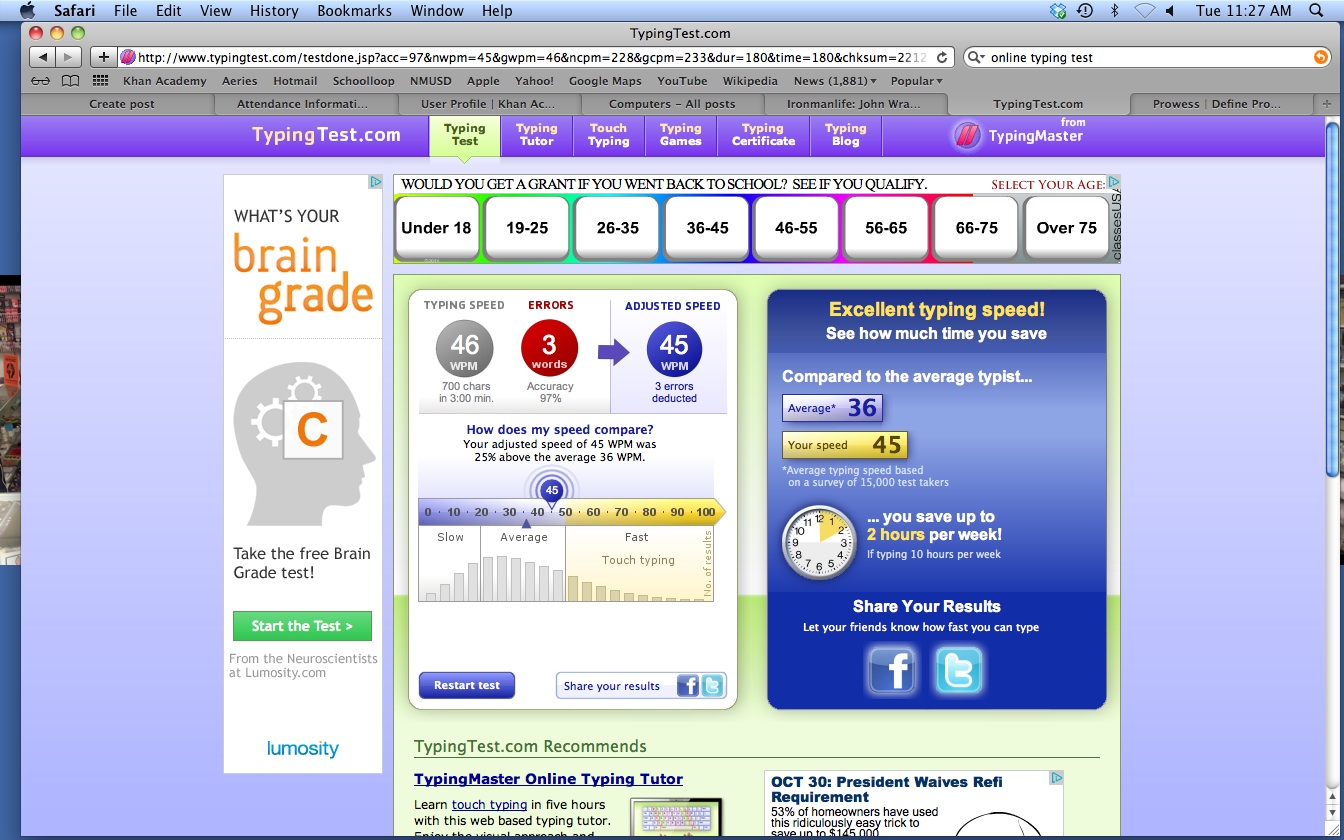

Thirty-four residents (33%) reported that they learned typing before high school, 37 (36%) during high school, and 33 (32%) in college and beyond. There was equal distribution of AMGs (36%), AIMGs (29%), and IMGs (36%). There was equal representation of male (47%) and female (53%) residents from various specialties, backgrounds, and PGY levels. Of the 104 residents, 66 participated online and 38 took the test in person. Thirty-seven percent (104 of 280) of residents participated in the study. Various responses were collected, tabulated, summarized, and analyzed by using the appropriate statistical tests. Statistical analysis was performed by using STATA statistical software version 12.1 (Stata Corp LP, College Station, TX). This study was approved by the Institutional Review Board of NYMH. Skill levels were also compared between senior and junior, and male and female residents.

Typing skills were compared across AMGs, AIMGs, and IMGs.

Resident participants were categorized into American medical graduates (AMGs) American international medical graduates (AIMGs) and non-American international medical graduates (IMGs). Residents' typing skills were categorized as follows: (1) fewer than 26 net WPM = very slow (2) 26 to 35 net WPM = slow (3) 35 to 45 net WPM = intermediate and (4) greater than 45 net WPM = fast. Gross WPM were calculated from these data, and net WPM were calculated by subtracting errors (net WPM = gross WPM − number of errors). Custom software that calculates typing speeds (Techforis Inc, Nashua, NH) was used for the online typing tests. The in-person typing portion of the assessment was recorded in seconds by a researcher using a stopwatch. Participating residents were given a typing test, either in person or online, with a paragraph containing 100 alphanumeric words of a patient history. Residents were asked to rate their typing skills as slow ( 45 WPM), and to indicate importance they assigned to typing for a resident (not important/somewhat important/very important). Participants were also asked when they learned to type (before high school/during high school/college/other) and whether they learned on a typewriter or a computer. We collected the following demographic data: specialty, postgraduate year (PGY)-1 to PGY-7, citizenship, and the country where participants attended medical school. All residents (N = 249) and fellows (N = 31) at NYMH were invited in person or via e-mail to voluntarily participate in the study.


 0 kommentar(er)
0 kommentar(er)
